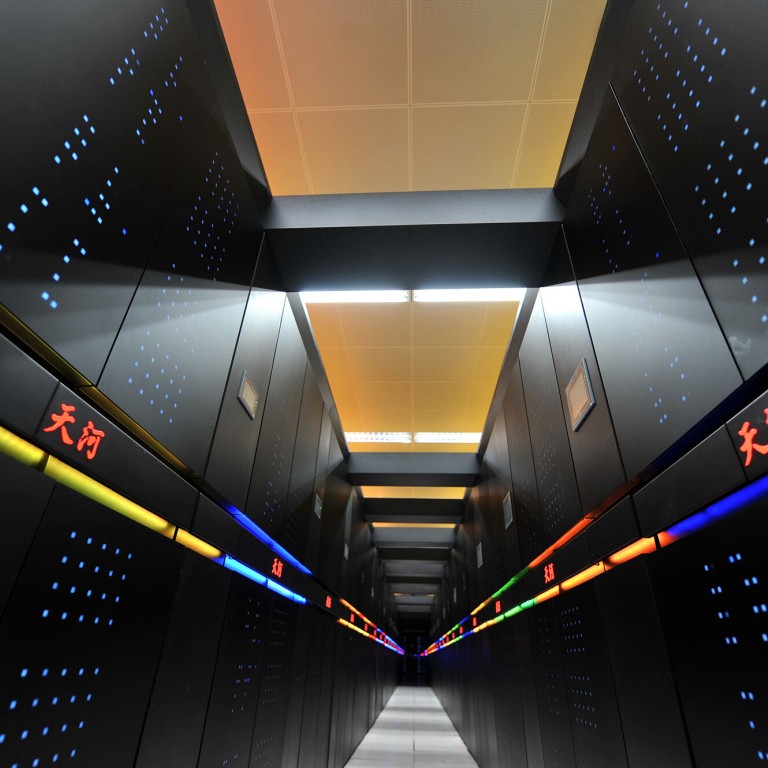
Chinese supercomputer 'too slow' to compete in race for hypersonic weapons, scientist warns
A supercomputer used by China to develop a hypersonic space weapon was too slow, having a processing speed only a tenth of that of its American counterpart, according to a researcher involved in the highly sensitive project.
A supercomputer used by China to develop a hypersonic space weapon was too slow, having a processing speed only a tenth of that of its American counterpart, according to a researcher involved in the highly sensitive project.
While China possesses some of the world’s most powerful computers, Ye Youda, researcher at the state laboratory of aerodynamics in Mianyang, Sichuan and a key scientist on the hypersonic weapon project, complained about a shortage of computing power in a paper in the latest issue of the Chinese Science Bulletin.
Ye said the computer used in China’s hypersonic project would need to increase its performance 10 times to match its U.S counterpart, the Pleiades supercomputer at NASA. The US machine did not even make the latest top ten list of world ranking by website top500.org, which compiles statistics on the world’s supercomputers.
China has 61 supercomputers and quite a few models are faster than the Pleiades, including the Tianhe-2 supercomputer developed by the National University of Defence Technology. The computer has held the No.1 position for more than two years with its speed of 33.86 quadrillion calculations per second, outperforming the second-place machine, the Titan in the U.S, by nearly two to one.
But Ye’s paper revealed that top priority weapons research did not always get access to the best supercomputers. Some mainland computer scientists said that machines such as the Tianhe-2 were not created to meet specific needs, but to win a place on the top500 list. They were “face projects”.
Scientists also said that the power of the top machines is not fully used because of the difficulties in writing the complex software needed for some tasks. While the Chinese government invested a lot of resources on hardware to win the supercomputer race, software development was often neglected and short of funding.
Hypersonic weapons are one of the most important military research projects in China, which joined the hypersonic arms race relatively late but is making rapid progress. Despite Ye’s complaint however, the military conducted a third test flight of a hypersonic weapon system last December.
At hypersonic speeds, a missile or delivery vehicle could travel up to 10 times the speed of sound to reach anywhere in the world within an hour. Most defence systems would not be able to intercept an object at such a high speed.
As in many countries, China’s programme is top secret, but in the paper Ye revealed some of the important breakthroughs in the last five years.
He said military researchers had developed several prototypes with various designs to achieve high aerodynamic efficiency, while “significant advancements” had been made in heat control, flight stability and wind tunnel buildup.
But he warned that a weakness in high-performance computing was hampering China’s endeavours. Without faster computers, Chinese researchers would have to waste time breaking down sophisticated calculations into smaller jobs so they could be run on less advanced machines.
At the same time, the lack of computing power slowed down scientists’ effort to create and verify innovative designs for hypersonic weapons, he wrote.
A good supercomputer could be used as a “digital wind tunnel” to quickly develop prototypes for test flights and help the decision on the choice of models for production.
Ye did not name the supercomputer system his team wanted to use for the hypersonic project.
However, since each supercomputer has a unique physical structure, scientists would have to develop new algorithms and software if they wanted to move the weapon project to a new platform, such as the Tianhe-2, Ye said.
Besides the Tianhe-2 in Guangzhou, China’s other high-performance computers include the Tianhe-1A at the National Supercomputer Centre in Tianjin, the Nebulae in Shenzhen and Sunway Blue Light in the eastern city of Jinan.

